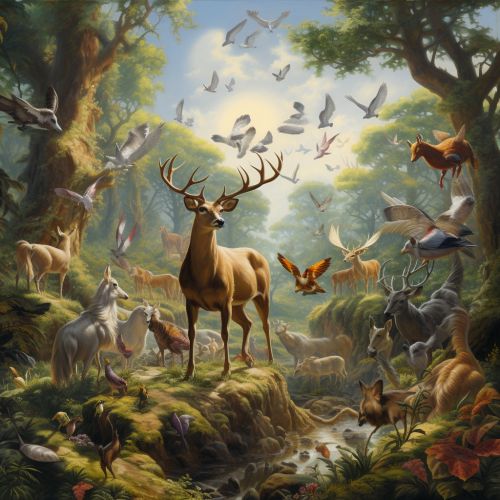Population dynamics
Introduction
Population dynamics is the branch of life sciences that studies the size and age composition of populations as dynamic systems, and the biological and environmental processes driving them (such as birth and death rates, and by immigration and emigration). The example scenarios are the fluctuation of animal populations and the growth of populations.
Understanding Population Dynamics
Population dynamics attempts to understand the complex ways populations change over time due to changes in the rates of birth, death, immigration, and emigration. These changes can be driven by a variety of factors, including environmental conditions, resource availability, and interactions with other species. The study of population dynamics involves the use of mathematical models to simulate and predict changes in population numbers over time.
Mathematical Models in Population Dynamics
Mathematical models are crucial tools in population dynamics. They allow scientists to describe the relationships between different factors affecting a population and predict how changes in these factors will affect the population in the future. These models can be simple, involving only a few variables, or they can be complex, incorporating many different factors and their interactions.
Key Concepts in Population Dynamics
There are several key concepts in population dynamics, including carrying capacity, population growth rate, and population density.
Carrying Capacity
Carrying capacity is the maximum number of individuals of a particular species that an environment can support indefinitely. It is determined by the availability of resources such as food, water, and space, as well as the presence of predators and disease. When a population exceeds its carrying capacity, it can lead to a population crash, where the population size rapidly decreases.
Population Growth Rate
Population growth rate is the rate at which the number of individuals in a population increases (or decreases) in a given time period due to birth, death, immigration, and emigration. It is usually expressed as a percentage of the population size.
Population Density
Population density is the number of individuals of a species per unit area or volume. It is a key factor in understanding the dynamics of populations, as it can affect the rate of reproduction and survival of individuals.
Factors Influencing Population Dynamics
Several factors can influence population dynamics, including environmental factors, genetic factors, and interactions with other species.
Environmental Factors
Environmental factors such as temperature, precipitation, and availability of resources can greatly influence population dynamics. For example, a drought can reduce the availability of water and food resources, leading to a decrease in the population size.
Genetic Factors
Genetic factors can also play a role in population dynamics. For example, genetic diversity can influence a population's ability to adapt to changing environmental conditions, affecting its survival and growth.
Interactions with Other Species
Interactions with other species, such as competition, predation, and symbiosis, can also influence population dynamics. For example, an increase in the population of a predator species can lead to a decrease in the population of its prey.
Applications of Population Dynamics
Population dynamics has applications in many fields, including conservation biology, ecology, and epidemiology.
Conservation Biology
In conservation biology, understanding population dynamics is crucial for the management and conservation of endangered species. It helps in predicting the effects of environmental changes and human activities on the population size of endangered species.
Ecology
In ecology, population dynamics is used to understand the dynamics of ecosystems, including the interactions between different species and their environment.
Epidemiology
In epidemiology, population dynamics is used to understand and predict the spread of diseases in human populations.
Conclusion
Understanding population dynamics is crucial for managing natural resources, conserving biodiversity, and predicting the spread of diseases. It involves the use of mathematical models to understand the complex ways populations change over time and the factors influencing these changes.
See Also


